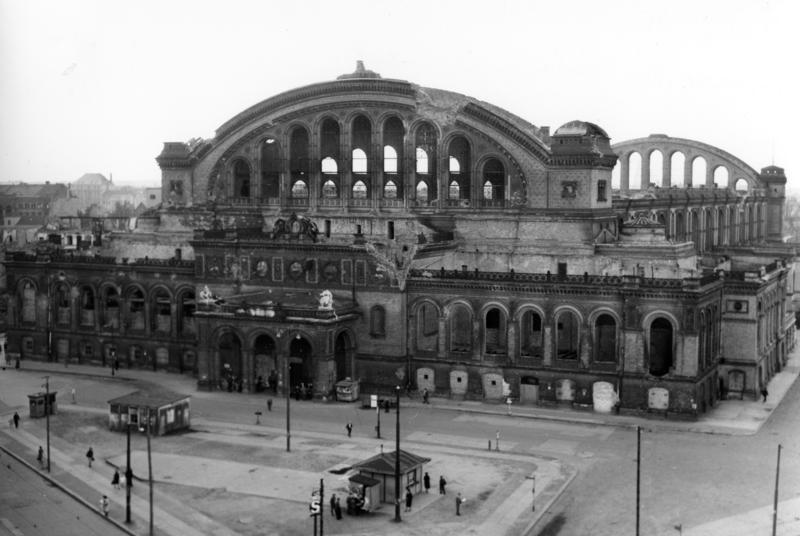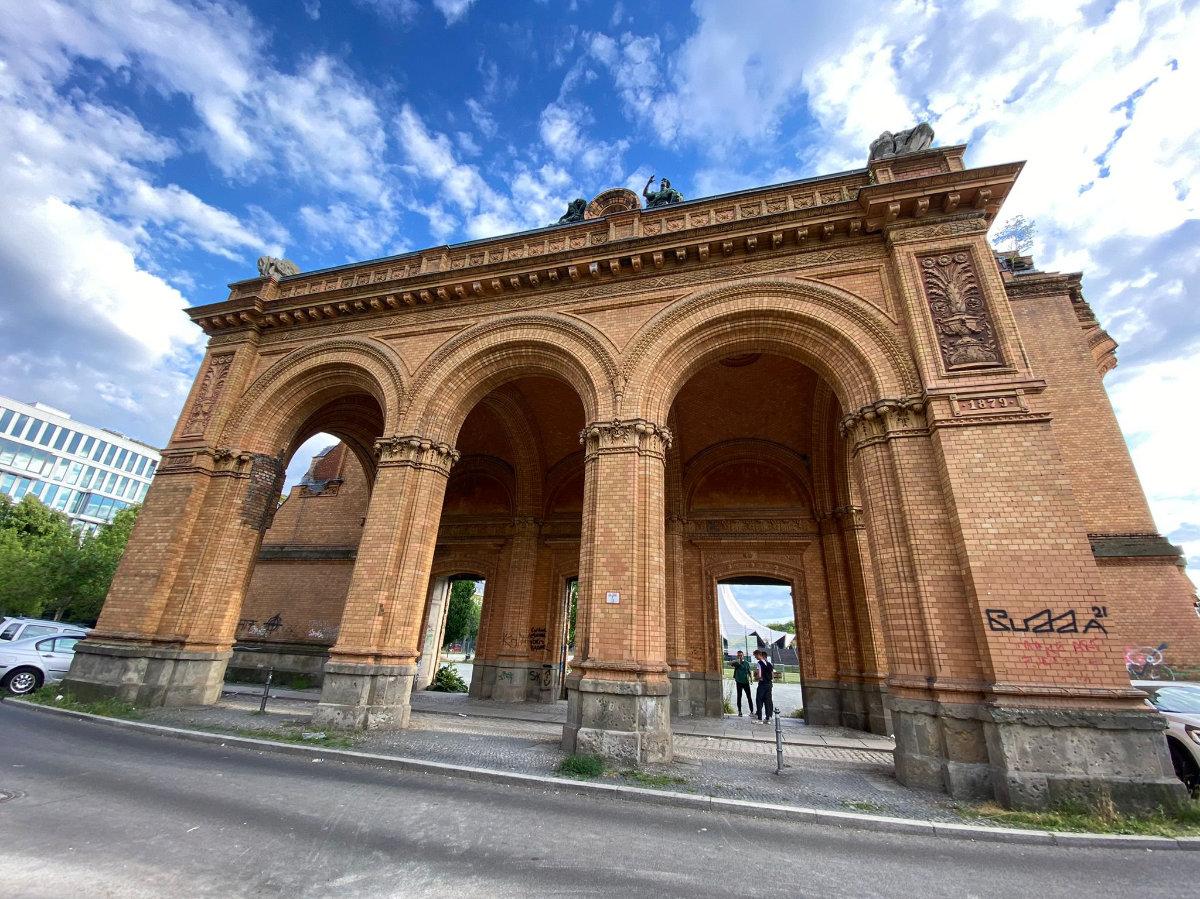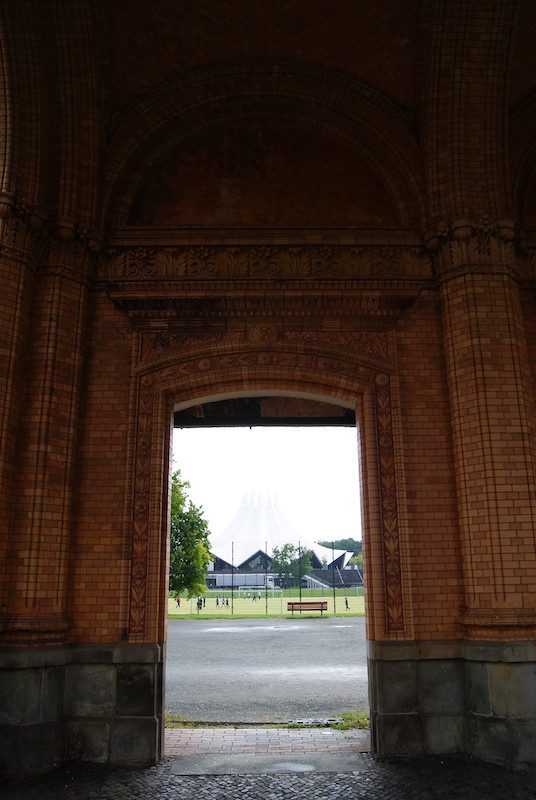Anhalter Bahnhof, once the largest railway station in Germany
Southeast of the busy Potsdamer Platz is the quieter area where Anhalter Bahnhof railway terminus once greeted passengers. This is a former railway terminus in Berlin, Germany. Severely damaged in World War II, the station was demolished in 1960 so is not to be confused with the S-Bahn station which still operates underneath here – the nearest entrance to this station is mere metres away from the ruined, former atation.
History
The overground line here originally opened in 1841 running to Juterbog and then to Dessau and beyond through the state of Anhalt, hence the name. The station was part of a network which carried train services to and from Leipzig, Frankfurt am Main and Munich. Over time the station was expanded to, what was in 1872, the largest railway station in Germany.

The huge iron and glass train-shed roof by Heinrich Seidel (1842-1906) measured 171m long by 62m wide (covering 10,600m², under which 40,000 people could stand), and rose to 34m in height.
With the closure of the Dresdner Bahnhof, trains to Dresden, Prague and Vienna, were added to the roster at Anhalter Bannhof.
 Ruin of the Anhalter Bahnhof, 1951.
Ruin of the Anhalter Bahnhof, 1951.
During World War II, Anhalter Bahnhof was one of three stations, along with Berlin Grunewald (click to read about Gleis 17), and Moabit Goods Depot, to deport Berlin Jews.
The station received major damage during World War II which meant only local trains were running. The downfall of Anhalter Bahnhof was sealed with the souring of relations between East and West. The station was in the West but was served by stations in Soviet-controlled East Germany. In 1952 all remaining East Germany trains were diverted to Ostbahnhof and Anhalter Bahnhof was closed and finally demolished in 1960, leaving only the facade.



Click here for information from Berlin City Council on Anhalter Bahnhof.
Where
Askanischer Platz 6,
Berlin
Berlin Map
Zoom in to find out all our posts about Berlin
Remember to pin this image to keep for later






